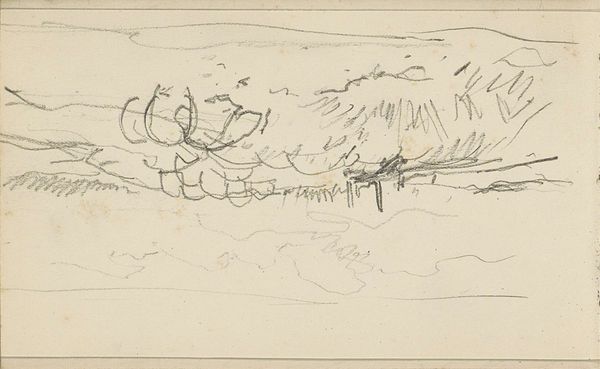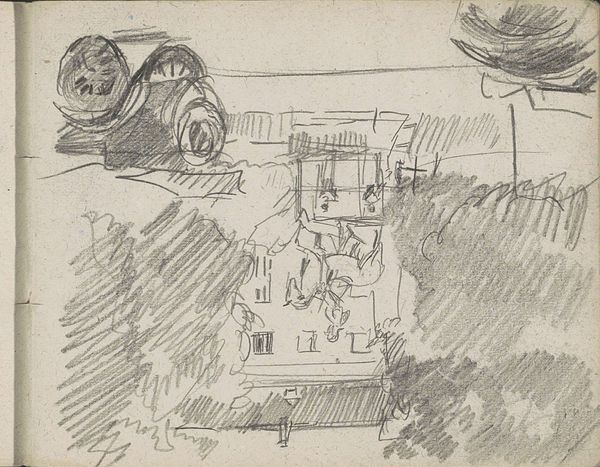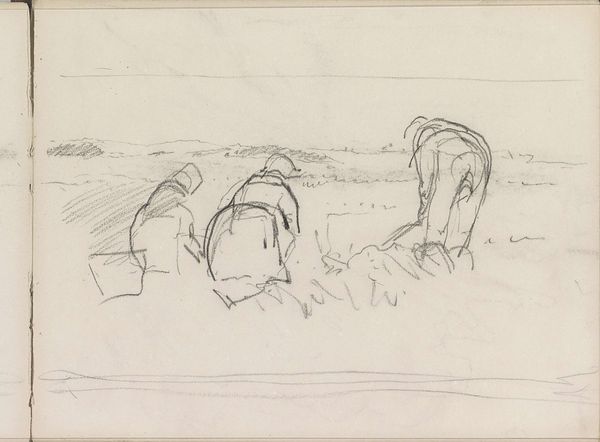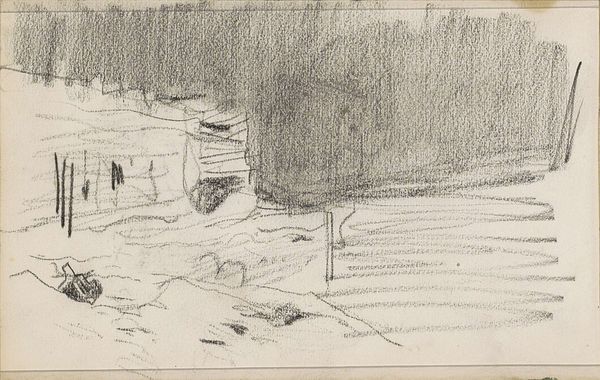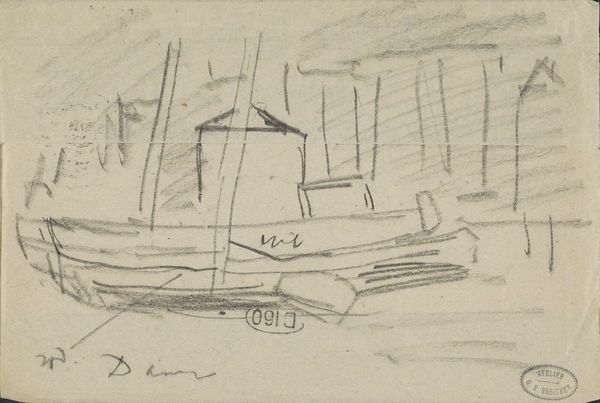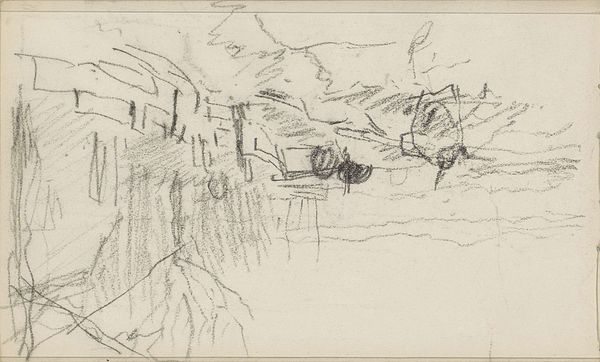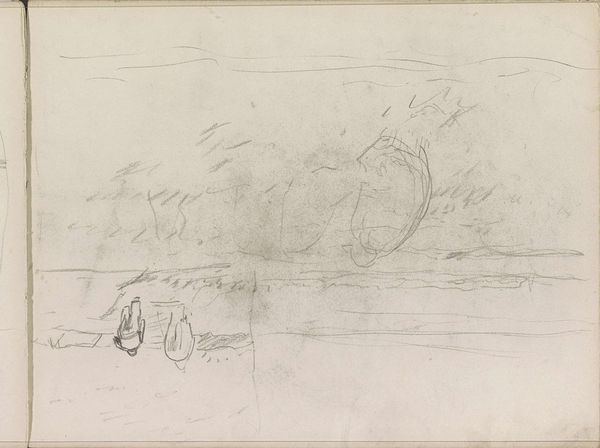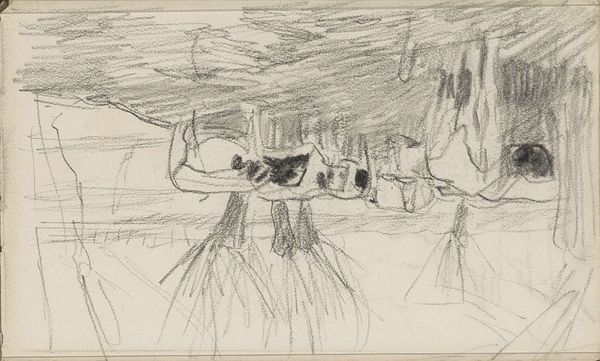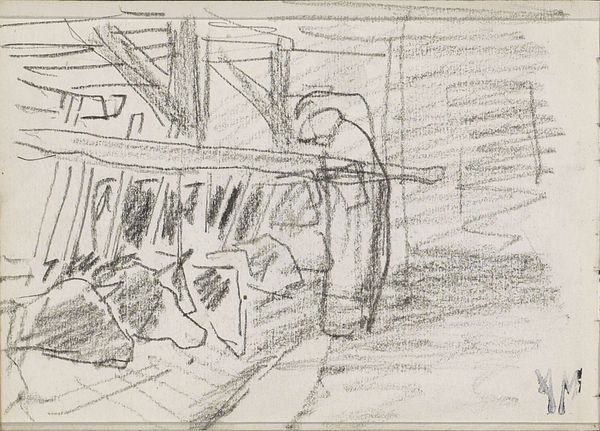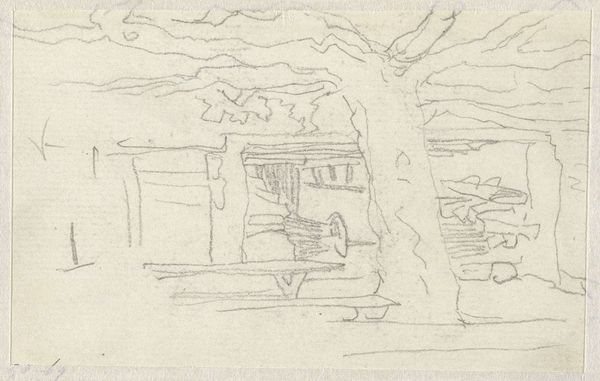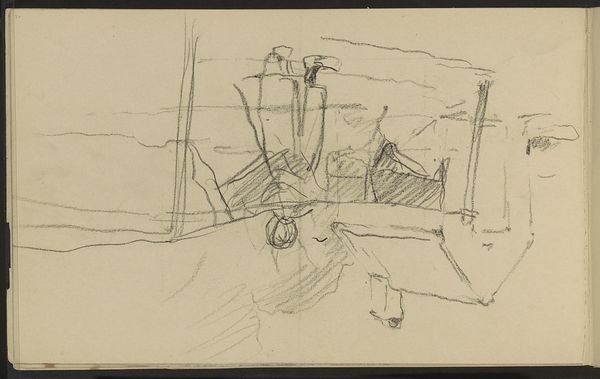
drawing, pencil
#
drawing
#
impressionism
#
landscape
#
pencil
#
realism
Copyright: Rijks Museum: Open Domain
Curator: Welcome. We are looking at a pencil drawing by Anton Mauve titled "Three Riders on the Beach Dunes," circa 1876, currently held at the Rijksmuseum. What is your first impression? Editor: Somber and solitary. Even with three figures, the stark, linear quality and the bleakness of the landscape evoke a real sense of isolation. Curator: That melancholy connects to Mauve's broader artistic project. He positioned himself, like many Hague School painters, as documenting the authentic life of the working class and the often-stark realities of rural life in the Netherlands. Editor: Precisely. The horses, slightly stooped, seem to mirror the implied postures of their riders – conveying resilience under harsh conditions. This symbolism connects deeply to the Dutch identity. Curator: Mauve aimed for realism but these sketches also capture the rise of tourism. There's something inherently political in choosing to portray labor rather than leisure when the dunes became a recreational location for the bourgeoisie. The common man is being recognized in painting and starting to gain an audience. Editor: A great point. The image resonates far beyond just pictorial representation. Horses themselves hold potent symbolism. Their appearance here – not as symbols of power or wealth but rather of labor and shared burden – alters their meaning completely. Curator: We might ask if the riders can ever fully escape that symbolic laboring role or that societal condition, even during moments of apparent recreation. It seems the riders have always carried such heavy association. Editor: I agree. Their placement, almost centered, could represent the centrality of their lives to the very landscape they occupy. It suggests how rooted they are in the place and their essential contribution to it. Curator: Overall, this work illustrates a period of huge societal transformation. This drawing underscores this important socio-historical development while adding to the complexity of artistic landscape and the role of artwork. Editor: Beautifully stated. A seemingly simple sketch revealing complex emotional and historical layers – leaving you with that thoughtful feeling that you are standing at the cross-roads of modern progress.
Comments
No comments
Be the first to comment and join the conversation on the ultimate creative platform.
